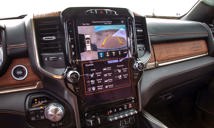In an ever-more tech-focussed world, vehicle infotainment systems are a vital selling point. The pace of change is rapid at the front, and slow at the back of the pack, while interlopers like Android Auto and Apple CarPlay have injected themselves into the mix with a fervour. Indeed, the absence of those two features can be enough to render certain makes and models obsolete in the eyes of consumers.
But it’s not only mobile phone functionality that matters. Ease of use, ease of learning, features, and – to a large degree – aesthetics play a vital role in our appreciation of a car’s infotainment and therefore, the car itself.
These are our favourite systems of 2018.
Fifth: Kia UVO/Hyundai BlueLink
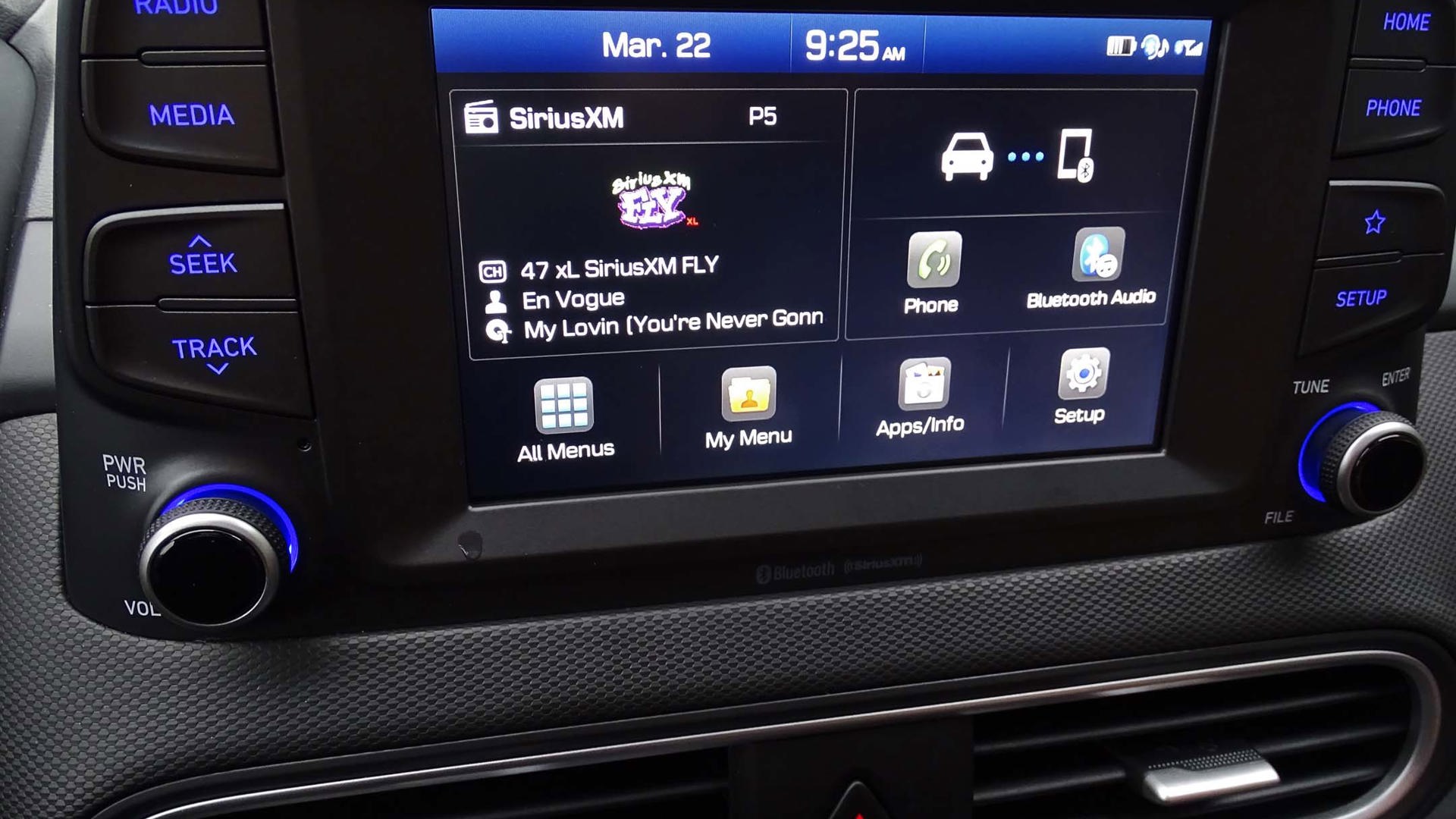
Hyundai and Kia’s systems are fundamentally the same. Hyundai’s is brighter and more colourful, while Kia’s mostly black motif is sleek and modern. The reason they’re on this list – and probably the single most clever one-off feature in this list – is the Korean makes’ recording and replay function.
Both systems will allow you to choose up to 10 favourite stations, and the robust computer hardware in the dashboard will record those stations the moment the car is started. That means you never swap over only to catch the end of your favourite song – you can go back to explore the recent playlist on your favourite stations. You can listen to “Baby Got Back” on repeat for an hour, or you can hit it and quit it.
Fundamentally, the two systems are a marriage of analogue controls for audio and tuning, plus hard buttons for key features. Android Auto and Apple CarPlay are standard, and the Bluetooth system is easy to use. These systems lose points for less-attractive graphics, and for locking out key functions like navigation when the vehicle is in motion – even if a passenger is on board.
Fourth: BMW iDrive
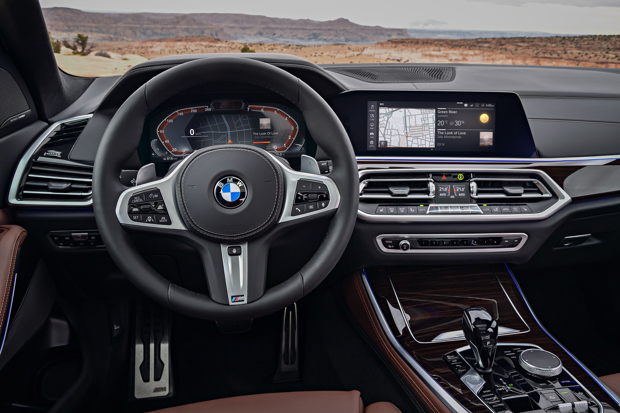
Split-screen function; vehicle performance displays; mobile-office functionality; web connectivity; satellite radio station search by station, artist or title; and a vivid head-up display/steering-wheel control combination make iDrive the richest, deepest system available. No other marque comes close to matching BMW’s level of detail and feature content.
The control puck is conveniently placed, easy to use, and, now with a touchpad surface to accept handwritten inputs, one of the best human-machine interface devices around. Couple that with a solid number of hard buttons for key functions, and the ability to complete simple navigation and phonebook scrolling while on the move, and the BMW is appropriately liberal too.
It’s only real flaws are the lack of standard Apple CarPlay/Android Auto – and only Apple CarPlay is available as an add-on option; Android Auto is not yet available. Some users find the system too complex, having too steep a learning curve.
A bonus nod goes to Mini, which uses the identical system, but adds whimsical Mini-appropriate graphics and features.
Third: Volvo Sensus
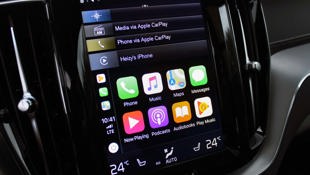
Sleek, stylish, sophisticated. Volvo’s Sensus system is centred on a large touchscreen, and is largely bereft of hard buttons. Visually, it’s a delight, though the touchscreen will turn off many older buyers. The menus are easy to navigate with a short learning curve, especially if you already use a smartphone or tablet device.
Media and radio is easy to use and explore, and the navigation is brilliant. Android Auto and Apple CarPlay are both available, and the large screen makes Android Auto a joy to use.
Second: Volkswagen Discover
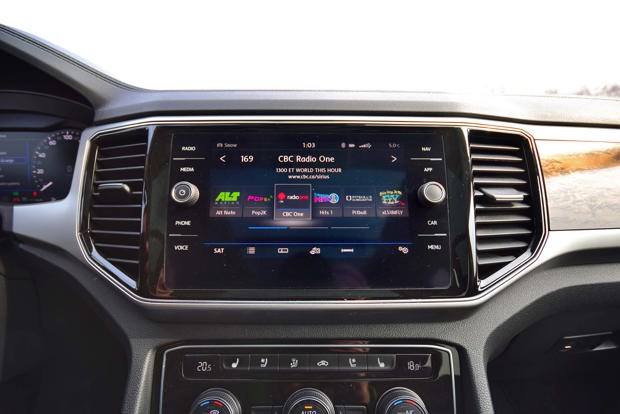
Channel identification art might be a minor thing to geek out over, but Volkswagen’s Discover Media infotainment system does such a wonderful job of bringing that artwork to life that it immediately endears one to their system. Add to that the fast response times moving through the menus, standard Apple CarPlay and Android Auto, and a much-welcome mix of digital and analogue controls.
The Discover system embraces simplicity without hurting functionality or feature content, and with it, Volkswagen has developed a system good enough to detract customers from moving to other brands. I personally know at least two families who will stick with the German marque purely based on their experience operating the radio and navigation controls.
Now, VW is upping the game with the emergence of its Virtual Cockpit displays. Taken from VAG’s luxury brand, Audi, the fully customizable digital instrument cluster is the cherry of top of Volkswagen’s very tasty infotainment sundae.
First: Fiat/Chrysler/Dodge/Ram Uconnect
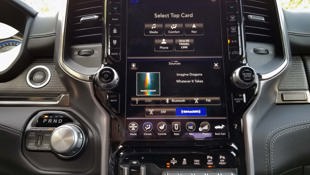
Uconnect had dropped off our “Best Infotainment Systems” lists due to its lack of Android Auto/Apple CarPlay. Now, those two programs are included in Fiat/Chrysler’s system and it is back on top of the pile.
Even the lower-spec Uconnect systems are robust products, with a great mix of analogue and digital controls.
The best part? Back-of-spoke controls for audio volume and tuning. Those steering-wheel-mounted controls are right under your fingertips making for ultra-easy and rapid use of the system. That’s important when you hear the first notes of your least-favourite song. You need never hear more than one bar of “Mambo No.5” again!
Controls for the heated/ventilated seats and heated steering wheel pop up on-screen upon start-up, so you can turn them on immediately.
Where this system really shines is in the 2019 Ram 1500, where an enormous 12-inch touchscreen dominates the centre console. FCA’s graphics are stunning, and even the instrument cluster display is rich with information, interactive displays, and customization ability. The Mopar Sport screens added to this system on performance models are brilliant too, and almost worth the money to upgrade to R/T models on their own.
Uconnect really is the single best-executed system on the market, with rapid responses, clear imaging, and amazing features.
